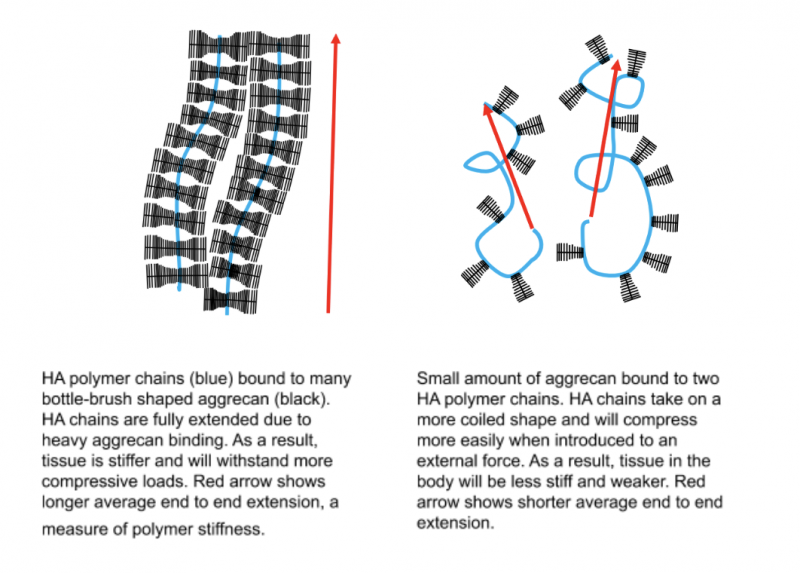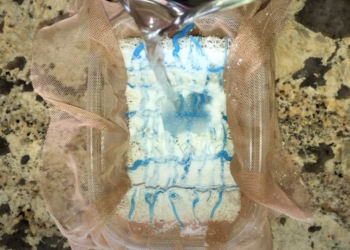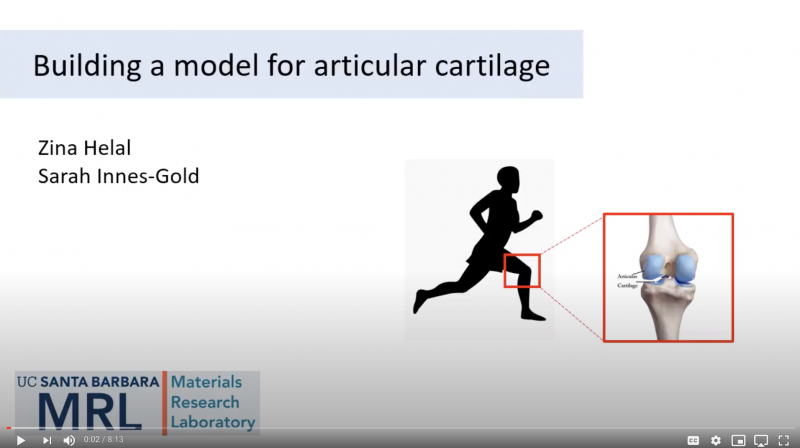Building a model for articular cartilage
Different biological tissues have different material properties: bones are hard, skin is soft, muscles are elastic. These properties are suited to the tissue function (stretchy bones would not be very effective), and they are determined by the microscopic components within the tissue.
Articular cartilage is an example of a biological tissue. It is found on the ends of bones that come together to form joints. It stops the bones from colliding or rubbing against each other during motion. Think about a knee. Normal activities like walking, climbing stairs, and jumping put a lot of pressure on the knee joint. When the joint is under compression, healthy cartilage acts like a bumper and stops the bones from colliding. To accomplish this, cartilage must be a stiff tissue, with a great ability to resist compression. But it also must be water-based to provide lubrication (compare to dry bones rubbing together, which would have very high friction and could wear themselves down).
There are several different types of polymers that make up cartilage. First, a protein called collagen forms a network structure that holds everything in place, but also allows water to get inside the tissue. Inside the collagen network, there are molecules called aggrecan. Aggrecan consists of a protein with polysaccharide branches coming off of it. This type of structure is called a “bottlebrush.” The last piece of the puzzle is “hyaluronic acid” (HA), another polysaccharide, often found anchored to the outside of cells inside the cartilage. Aggrecans bind to HA inside the tissue, and the HA holds them in place. HA polymers have a coiled shape that expands when aggrecan binding occurs

Aggrecan bottlebrushes are huge, and they have a lot of negative charges on their structure. This means that nearby aggrecans repel one another. It also means that they attract water into the tissue, since the polar water molecules are attracted to electrical charge. Because of the large size and high charge of the aggrecans, it is very difficult to push them closer together- this allows cartilage to resist compression!



